Car Tech: Honda Sensing vs. Subaru Eyesight
You can’t buy an autonomous car yet, but automotive safety technologies like Subaru EyeSight and Honda Sensing foreshadow a future of self-driving cars. We compare Subaru EyeSight and Honda Sensing, two similar crash avoidance technologies that are revolutionizing automotive safety.
Subaru EyeSight
Primary Features
Subaru Eyesight is in its second generation since it was first introduced at the 2012 New York Auto Show. All 2019 Subaru cars with EyeSight earned superior frontal crash test ratings by the IIHS. This driver assist technology is now optional in the following 2019 Subaru models: Crosstrek, WRX, and Impreza and standard in the Legacy, Forester, Outback, and Ascent. Here is a look at the primary features Subaru EyeSight offers.
Adaptive Cruise Control
Of the features Subaru EyeSight uses, adaptive cruise control is the showstopper that represents the first step toward self-driving cars. Subaru was an early innovator with this technology, setting the stage for many companies who have since followed suit with similar systems.
Do you hate constantly setting and resetting cruise control because of surrounding traffic? EyeSight is similar to conventional cruise control features, but it will automatically adjust the speed if you come behind a slower vehicle. If the slower vehicle leaves your lane, the car will return to its original speed.
Even in stop and go traffic, EyeSight will automatically follow a car in front of you at one of three distance settings. If the car in front of you stops, EyeSight will come to a smooth stop as well. Simply press a button when the car in front proceeds and the Subaru will return to the original cruise control speed when possible.
Blind Spot Detection
Increasingly an optional feature across the automotive landscape, blind spot detection senses cars coming into your vehicle’s blind spot. If a vehicle is in your blind spot and you engage your blinker, Subaru EyeSight will display a flashing light on a side view mirror until the car leaves your blind spot.
Pre-Collision Braking
It happens to even the best drivers. You’re calmly cruising in your car and before you know it, you’re only a few feet from the vehicle ahead of you. Pre-collision braking will detect when you are getting too close to a vehicle. The car first produces an audible beeping, followed by automatic braking.
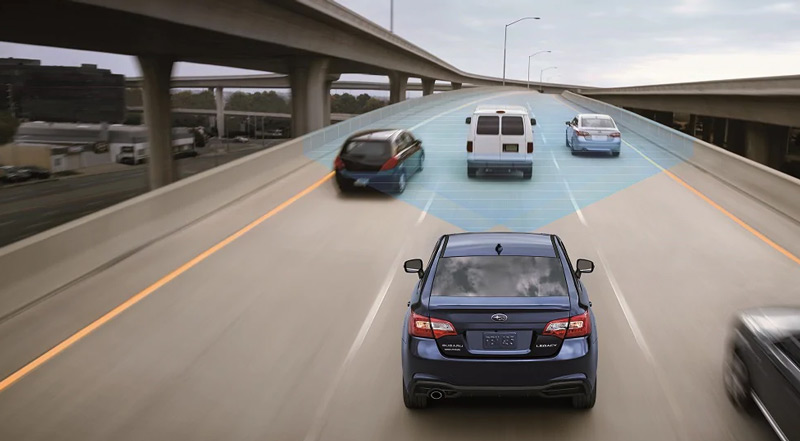
Imagine you’re driving toward a stopped vehicle that you are completely unaware of. Even if you have your foot on the gas the entire time, the car will automatically brake for you to either avoid or lessen the severity of the collision. If you are applying the brake too lightly, the system will apply stronger braking automatically to help you avoid the collision.
Pre-Collision Throttle Management
Suppose a driver in front of you at a stop sign begins to accelerate. You begin to accelerate in anticipation, but the lead car slams the brakes. The system will see the danger, provide an audible beeping and decrease the throttle to give the driver more time to react.
This is also beneficial in parked situations. Have you ever put the car in gear, cranked your head 180° to back up your car and been shocked when you slam the obstacle in front of your car? Pre-collision throttle management helps you avoid these costly mishaps.
Lane Departure and Sway Warning
We all do our best to avoid momentary distractions while driving, but even the attention of the best drivers will occasionally slip. EyeSight will use the lines of the road to detect your car’s position.
EyeSight will give you an audible warning if the car begins to drift into another lane without signaling. The alert will help the driver correct the car’s course quickly. If the vehicle drifts back and forth in the lane, EyeSight will trigger an audible lane sway warning to alert the distracted or drowsy driver. This warning does not steer the car but will afford the driver extra time to avoid costly and dangerous accidents.
Lane Keep Assist
New in 2016 and now a standard feature of the EyeSight package, Subaru offers Lane Keep Assist, a system that automatically steers and corrects a vehicle drifting from its lane. This has the potential to dramatically reduce accidents caused by drowsiness or distractions. When your turn signal is activated, Lane Keep Assist will NOT correct the vehicle, allowing you to freely transition between lanes.
Honda Sensing
Primary Features
Honda Sensing is a suite of safety and accident avoidance technologies that come standard on most of Honda’s line-up including the Passport, Accord, CR-V, and Pilot. It’s also an available as an option on the HR-V, Odyssey, Fit, and Ridgeline. The umbrella term, Honda Sensing, covers a suite of safety features. Let’s take a look at some of what Honda Sensing brings to the table.
Collision Mitigation Braking System™
Thanks to a small camera positioned behind the front Honda logo, drivers with Honda Sensing in their vehicles will have braking assistance to avoid frontal crashes. Honda Sensing will detect objects in front of the vehicle and attempt to slow the vehicle and give the driver an audible and visual warning.
Unlike Subaru EyeSight, the Honda Sensing will not bring the vehicle to a complete stop. It is only designed to reduce impact and give the driver extra time to manually stop the vehicle.
Lane Keeping Assist System
Should the driver accidentally leave his or her lane, the Honda will not only give an audible and visual warning, it will assist steering and bring the vehicle back into the center of the lane. Although not recommended, with Lane Keeping Assist activated you could hypothetically let go of the steering wheel and stay on the road. Note that this system only works with clearly marked lanes.
Adaptive Cruise Control
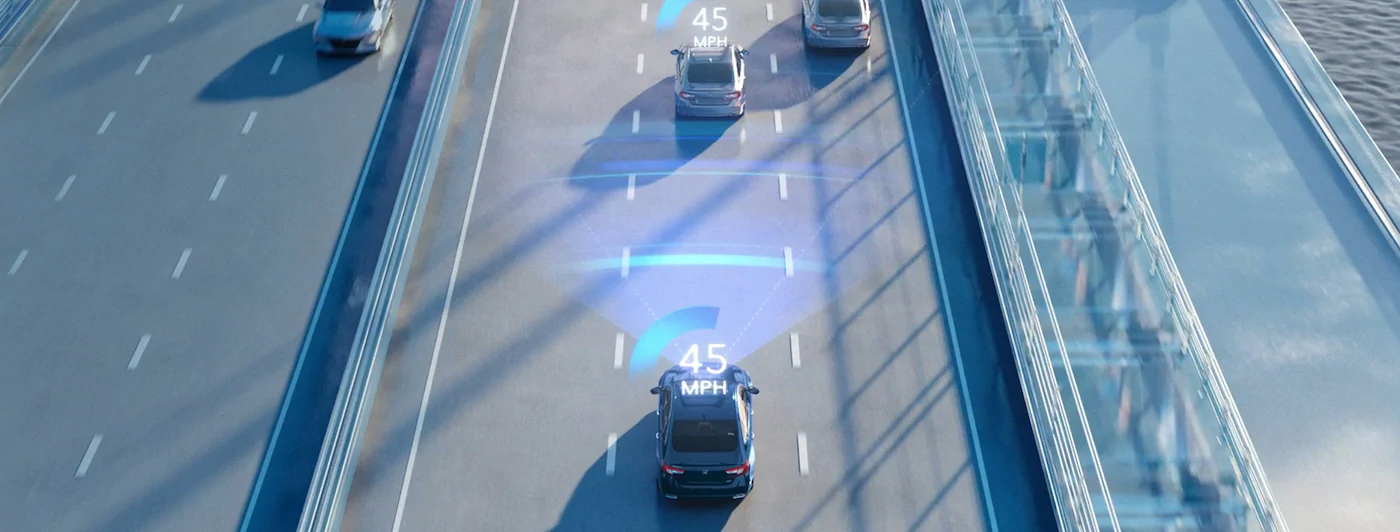
Honda makes setting cruise control a little less annoying in traffic by automatically adjusting your vehicle’s speed based on the speed of traffic. Honda Sensing’s adaptive cruise control feature is unable to completely stop the vehicle, but it boasts four following distance settings, one more than the Subaru EyeSight.
Honda LaneWatch™
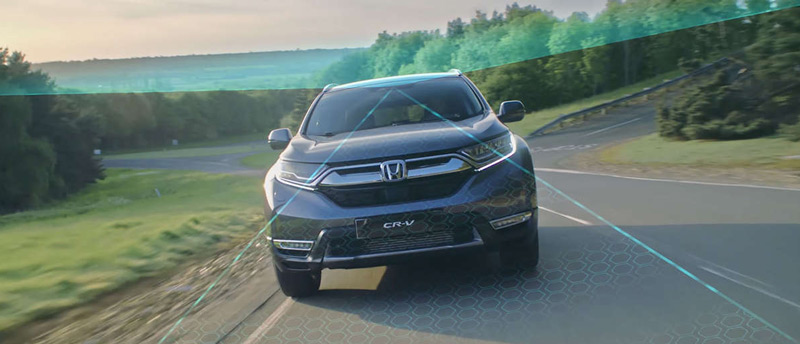
Make confident and safe passenger-side lane changes with Honda LaneWatch. This feature is essentially an attractive, tech-savvy version of old blind spot mirrors. When the driver activates the right turn signal, a view of the passenger-side lane will appear on the display screen in the Honda.
This camera view displays nearly four times what you can see using the mirror alone. Although this tool is not intended to be a replacement for checking your blind spot, it is certainly comforting to clearly see the entire area your vehicle is about to fill.
Comparison
Subaru EyeSight has set the standard for safety features that the rest of the automotive industry has been working steadily to catch up to. Honda Sensing is the most complete package so far, although the the above features can be found scattered across the upper trim levels of most new cars.
The ability of Subaru EyeSight cars to come to a complete stop with adaptive cruise control and to avoid a collision is incredibly impressive, setting Subaru above its competition. Despite this, Honda LaneWatch is a progressive, practical tool that EyeSight can’t yet compete with. The question is, will these companies continue to set the standard the rest of the industry follows or allow competitors to catch up?
How important are advanced safety features in your next car purchase? Let us know in the comments.


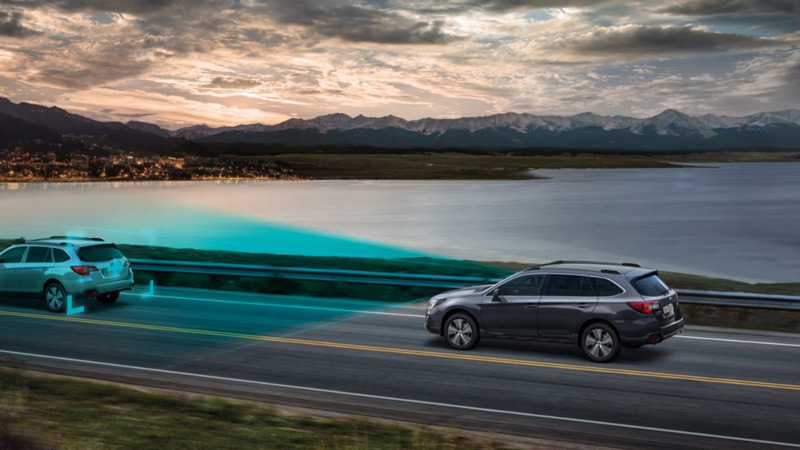
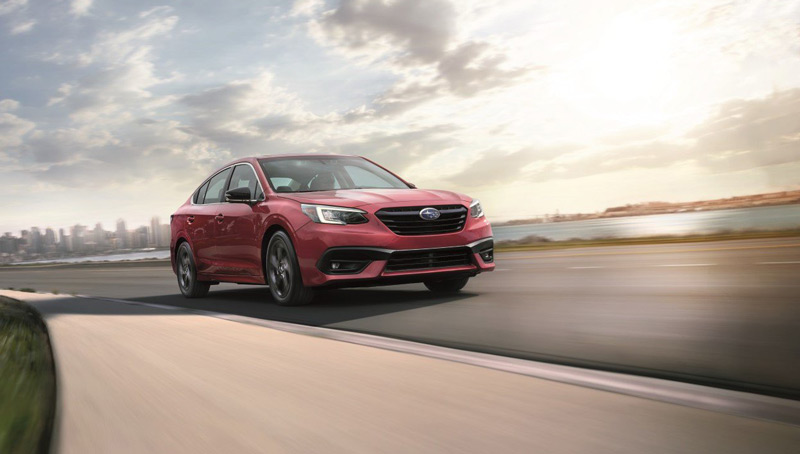
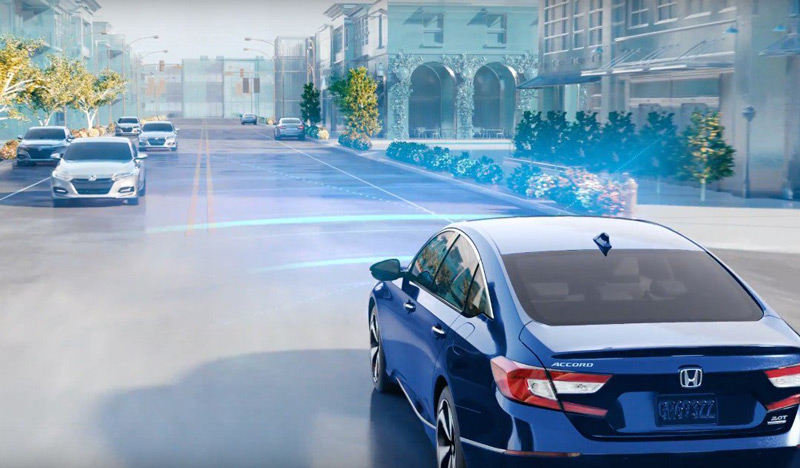
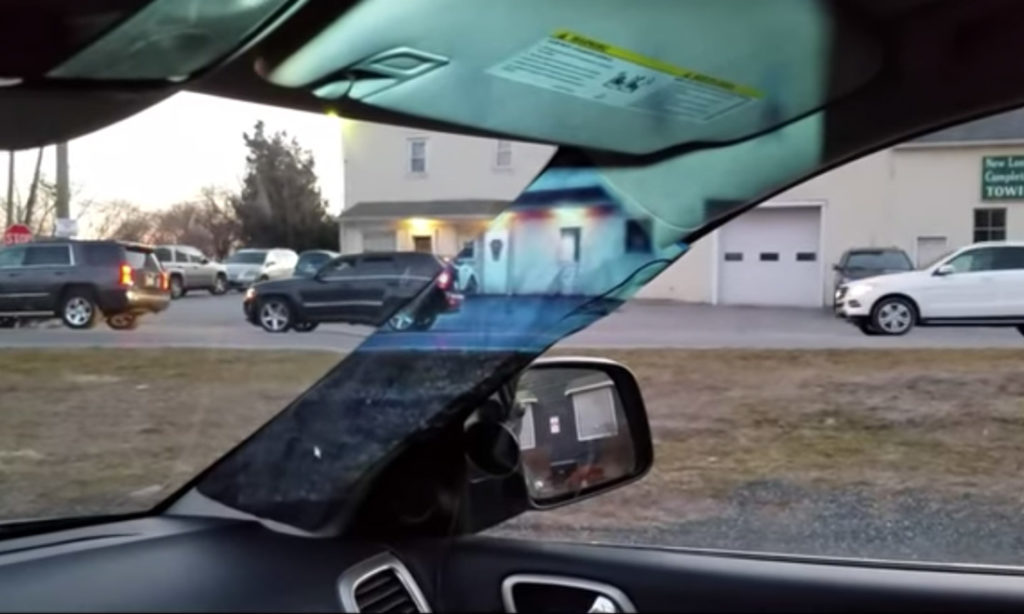
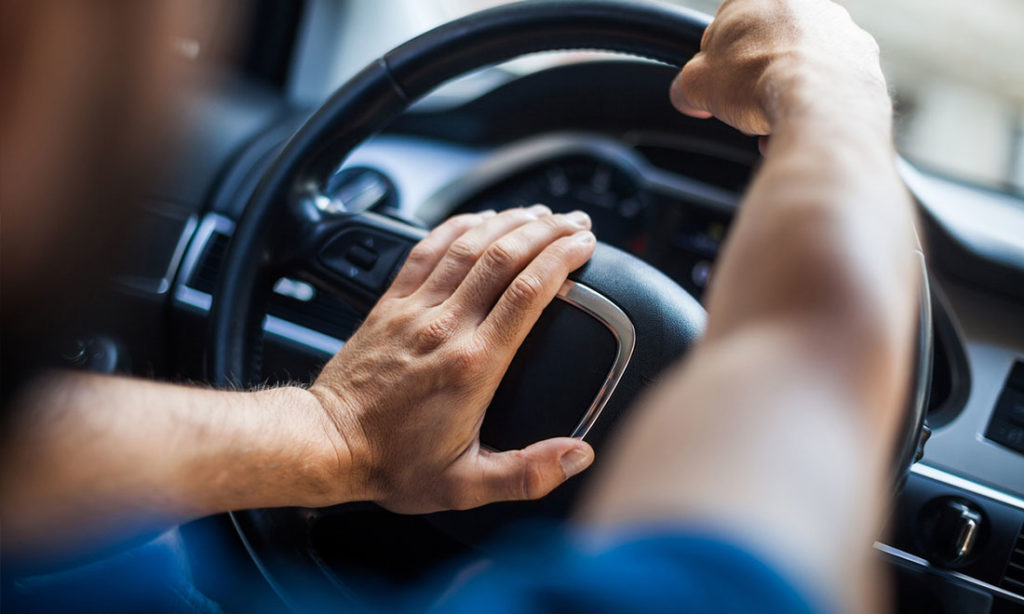
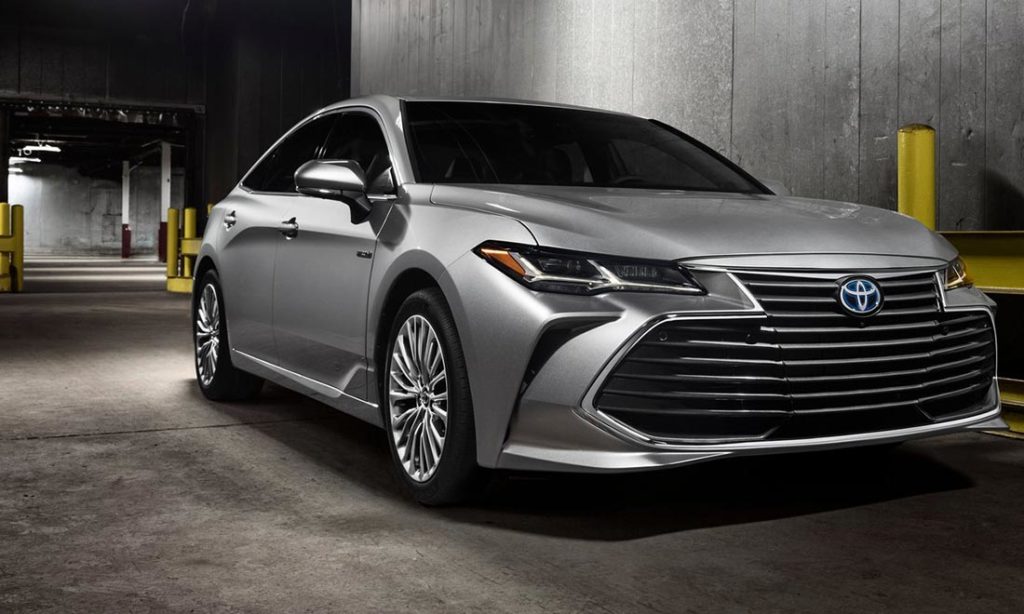

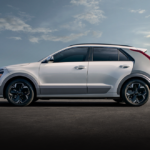








Both the Subaru EyeSight and Honda Sensing are great advancements in the autonomous vehicle space. As it is, the market for collision avoidance sensors is a very valuable one, with a report by Grand View Research predicting it to be worth almost 19 billion USD by 2025. How the competitors will match up in accuracy and inventiveness is something that should be eagerly awaited.
That’s great! Thanks for sharing! IT most definitely will be interesting to see how competitors will match up with these.
I find that the lane departure function in the subaru is much more sensitive than in the Honda. I will cross yellow, checkered, and solid white lines in the road and the subaru will flash a warning. In the Honda, it sometimes works while crossing a solid white line but not for the other lines. The subaru also has a better blind spot detection system that you can see much better than the honda, where it is in the mirror and is often difficult to see unless you’re looking at it. So, if my teen kid is changing lanes without signaling, he can plainly see that there is someone in the blind spot in the subaru whereas it’s harder to see in the honda.
Thank you for sharing, Bret!
It’s very important, and why I’m considering a new car purchase. Our reaction time reduces as we age, if a car can make our driving safer, that creates value for seniors. The rest of the drivers could use this technology due to their inattention in their driving. Many drivers are on their phones, or in one way or another, not paying attention to their driving. So I see value in this technology for everyone.
When my health requires it, it would be great if I could get in the car, enter the address on car GPS, and the car takes me where I need to go. Also if someone else drives it and wants to drive, they could just drive the car instead of entering an address. Some people enjoy the driving experience, and others could benefit from the car doing the driving. So we look forward to the advancing technology.